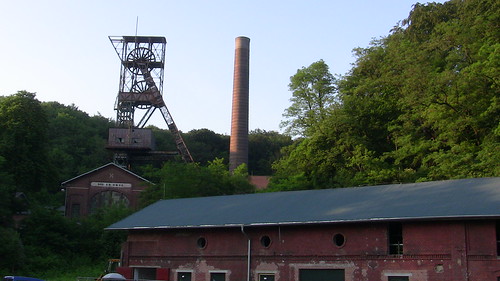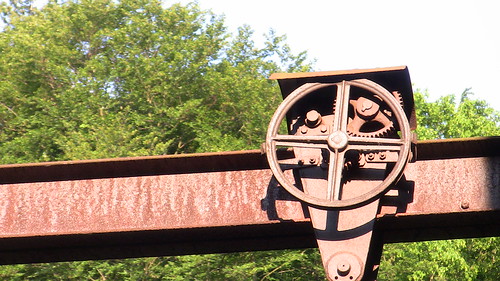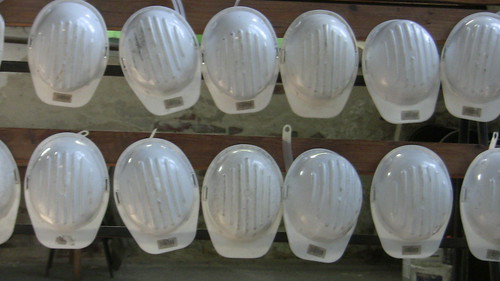You probably haven’t spent much time at any abandoned coal mining facilities in the Czech Republic, unless you’re a former Czech Republic coal miner, of course. You may never go to the Czech Republic at all. It’s not the first place on your bucket list when you’re planning your family vacation. Nevertheless, the Czech Republic - and more specifically, the Landek Park coal mining museum in Ostrava, an area close to the Polish Border - remains one of my favorite places out of all the locations I’ve ever journeyed on my travels.

The site’s history reaches back to 1776 when a gentleman named Mr. Ketlicka discovered odd black rocks while taking a walk on the crest of a mountain in Ostrava. He kept them in a cupboard for some time, but soon decided the filthy minerals were useless and tossed them into his fireplace. To his surprise, they caught on fire. In a short time, greedy opportunists had dug eleven pits over the site, intent on making a profit from the massive deposit of black coal he’d accidentally discovered. It wasn’t long, however, before the government saw the potential, and so it was that over the following centuries, the ever-expanding Anselm Mine was constructed.
No coal has been mined from the Anselm Mine since the facility’s closing in 1990, marking nearly two hundred and ten years of operation. Over the years, the mine accumulated buildings and machinery. The most notable structures, made of weathered red brick and tarnished glass, were built in the 1800’s. Today it is part of Landek Park, perhaps the most interesting mining museum in the Czech Republic.

Probably my favorite part about the facility is the remarkably free range that visitors are given. What with the buildings and machinery that are in no way fenced off, I would expect them to lead you around by the nose, but the truth is you are relatively free to roam. From the valley where the parking lot and the larger machinery is located, you can walk up a very steep hill, where you’ll find the landing where the actual facility stands. Take time to study the details of the massive buildings and the intricate machinery tucked into unexpected places. You might not have the chance to experience the inner workings of a centuries-old coal mine a second time!
The Anselm facility provided food, quarters, and more importantly, medical care to the miners. It was home not only to miners, however, but also the rescuers and divers whose job it was to ensure the miners’ safety. Before visiting, I would never have known they were there. But it’s true! Without these brave men, there would have been no mining operation, and even in today’s mining facilities, such teams exist and know what to do in an emergency.

If deadly chemicals began to fill the mine or there was a cave-in, and they needed to evacuate the miners, the rescue team would throw a grenade of sorts filled with a harmless chemical called Mercaptan into the mine’s ventilation system. The particularly unpleasant odor would spread through the mine, alerting every miner that something was wrong. Immediately after catching a whiff, the workers would don their gas masks and run toward the nearest shaft to the surface.
A rescue team was a well-oiled machine, capable of being notified of the impending disaster, clambering out of their beds, donning their gear, and diving into the shaft in little under three minutes. If you were a miner trapped in a cave-in, you could count on them for your rescue. It was dangerous work as a miner, but perhaps even more so as the rescuer, for as a miner you might go without incident for months, but it was the job of a rescuer to enter these life-threatening situations whenever they arose and get the miners out. There were even divers on the rescue team to save victims from the frequent flooding in the mines, or to rescue miners from drowning in mineshafts after a sudden burst of water from encountering an underground stream.

Today, you can still enter the old shafts and tunnels, but you don’t have to worry about deadly gasses or crumbling mineshafts, and the tour guide will prevent you from getting lost. While on the tour you will even get to take the gigantic elevator machine down into the ground, although if you are at all claustrophobic you may prefer to stick with the sights on the surface.
The park itself is a beautiful place, and the awe-inspiring steel tower and industrial brick halls are contrasted with the green forests blanketing the area. To one side you will find a lovely little restaurant, and if you’re lucky you will be allowed to enter the Compressor Room, a great vault used today as an unorthodox meeting place for concerts or conferences. The place is rich with atmosphere and the history seems to be pressed into the cracks between the bricks along with the grit of two hundred years of mining. It’s a memorial not only to this piece of history, but also to the miners and rescue-men who died at this facility.

In short, Landek Park is incredible, and if you happen to be in the Ostrava area, you have no excuse for passing it up. It’s different from any place I’ve ever visited, and the aged structures, particularly in the morning mist, are breathtaking. Travel helps bring history to life, and there’s no better way to open up your eyes to the world than to take a risk and go on an adventure. So grab your backpack and your headlamp, and come visit the Landek Park in Ostrava!
William Wellman is a member of the Youth Travel Blogging Mentorship Program
All photos courtesy and copyright Will Wellman
The place is rich with atmosphere and the history seems to be pressed into the cracks between the bricks along with the grit of two hundred years of mining.
Posted by: William Wellman
